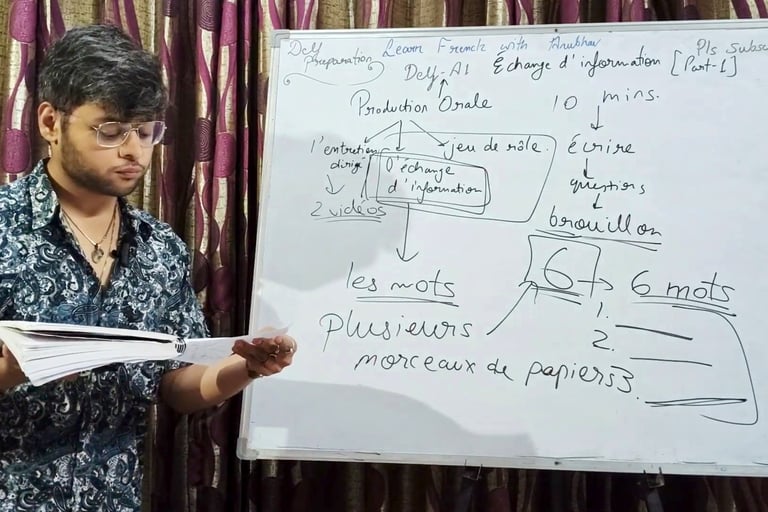Why Every French Noun Has a Gender (and How to Remember It Easily)
Struggling to remember whether it’s le or la? You’re not alone! French gender can seem confusing, but it actually follows simple patterns, with a few fun exceptions. Learn the logic behind it and master French like a pro!
INSIGHTS ON FRENCH
Anubhav Roy
10/28/20253 min read


One of the biggest mysteries for French learners is this: Why does every noun in French have a gender? Unlike English, where objects are neutral ("a chair," "a book"), French nouns are either masculine or feminine, and that single distinction changes everything in a sentence: articles, adjectives, and even pronouns. Let’s decode this once and for all.
Why French Nouns Have Gender???
The idea of grammatical gender dates back to Latin, the root of French. Originally, gender was a way to group words, not people. Over time, this evolved into the masculine–feminine system we see today. Think of gender in French not as logic, but as language memory. Each noun comes with a built-in tag that affects how other words behave around it.
Step 1: The Basic Rule
Every French noun must be used with an article that shows its gender. Masculine: le (definite), un (indefinite) → le livre (the book). Feminine: la (definite), une (indefinite) → la table (the table). If the noun starts with a vowel or silent h, both genders use “l’” → l’ami (masculine), l’amie (feminine).
Step 2: Common Patterns – How to Guess the Gender
While there are exceptions, certain endings often reveal whether a noun is masculine or feminine.
Usually Masculine: words ending in -age (le fromage), -ment (le bâtiment), -eau (le gâteau), -isme (le réalisme), -oir, -ier, -in, -on (le miroir, le pantalon).
Usually Feminine: words ending in -tion, -sion (la télévision), -té, -ée (la beauté, la journée), -ure (la peinture), -ence, -ance (la différence, la chance), -ie, -lle, -tte (la famille, la baguette).
Step 3: The Exceptions
Even with all these patterns, French has exceptions that must be memorized. For example, words ending in -age are mostly masculine, but la plage, la page, and la cage are feminine. Similarly, most words ending in -e are feminine, but there are many masculine ones too, such as le problème, le système, le musée, and le lycée. These irregular cases are part of what makes French charming but also tricky, so make a personal list of these exceptions as you encounter them.
Step 4: How to Remember Noun Genders Easily
Always learn with the article. Do not memorize “chaise”; memorize “la chaise”. This creates a natural connection.
Use color coding. Write masculine nouns in one color and feminine nouns in another to strengthen visual memory.
Make associations. For example, le soleil (the sun) feels masculine because it is strong and bright, while la lune (the moon) feels feminine because it is calm and gentle.
Use flashcards or apps. Write the noun on one side and the article on the other. Regular practice helps retention.
Listen carefully while reading aloud. Native speakers absorb gender naturally because they hear it all the time. Try reading short texts aloud daily.


